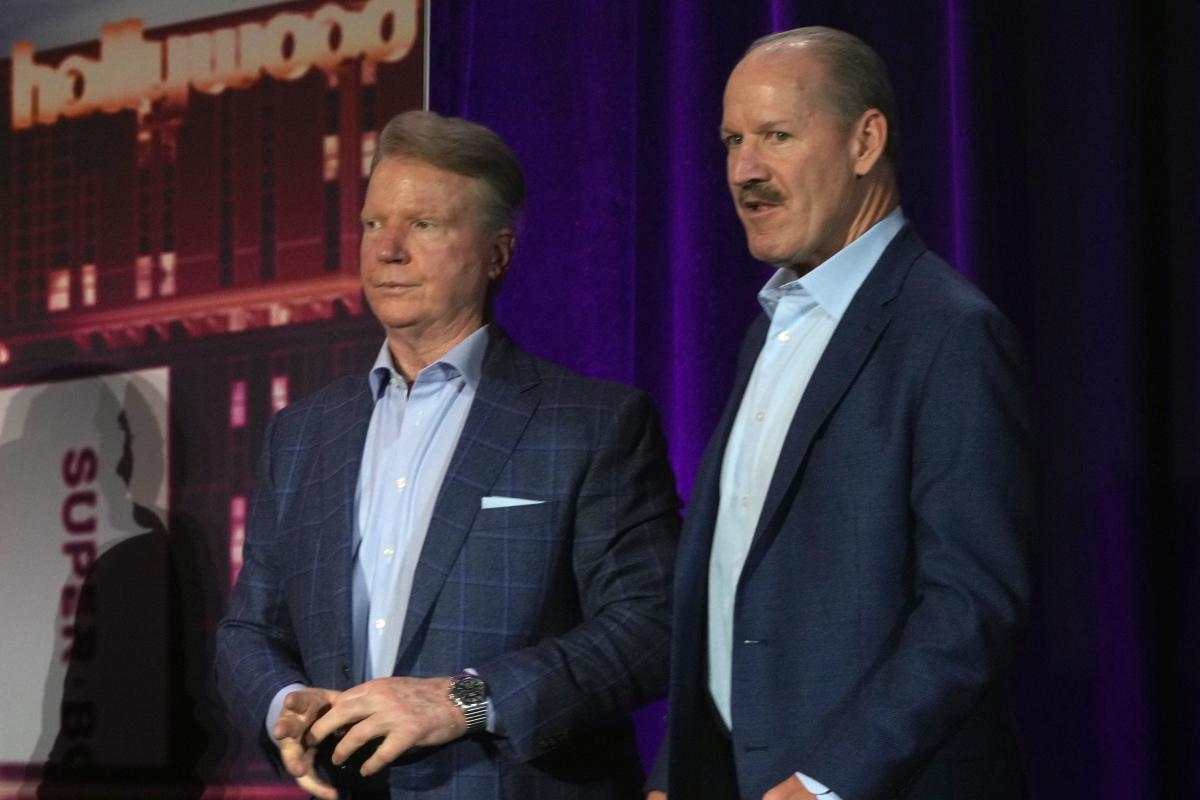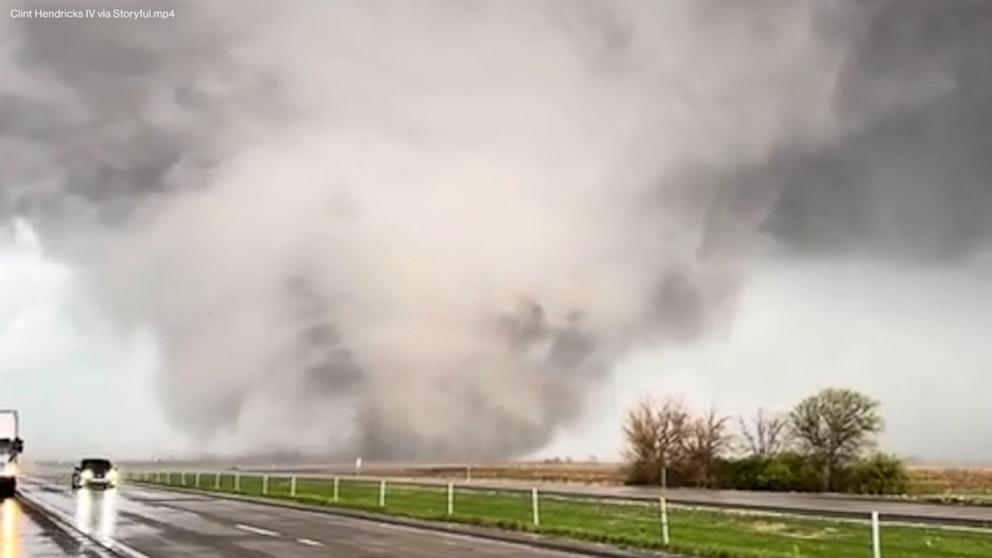On Wednesday, Claudia Wardius and her husband Glenn flew to New York City to chaperone their daughter Katie and her fellow Eastbrook Academy singers for a Sunday concert at Carnegie Hall.
It’s a once-in-a-lifetime opportunity to see their child sing at the legendary venue — but the trip coincides with what Wardius called another once-in-a-lifetime opportunity. Well, twice in a lifetime for her — the total solar eclipse on Monday.
After seeing a total solar eclipse in St. Louis in 2017, Wardius knew she wanted to see this year’s and started planning seven years ago. At 55, it might be her last chance to see one. The next visible in the contiguous United States isn’t until 2044 and she’s unlikely to travel internationally.
“It was beautiful. It was an amazing experience. We always planned to go and see this one, too,” Wardius said. “But then when the New York trip, I kind of thought it was later in the month and that we’ll just do both, but it’s not. … But we just can’t miss it. It’s just an amazing thing to see.”
Wardius and her husband are among the Wisconsin residents with extensive travel plans — whether driving or flying or even leaving the country — to find the best spot to see the eclipse in its path of totality.
In Milwaukee, the moon will cover almost 90%, yet those who have seen prior eclipses say the allure of the sight in its totality is literally the difference between night and day.
For Wardius, having a chance to see it meant scrambling a month ago to make a hopeful itinerary for a trip the morning of the eclipse from New York City to Indianapolis. They need each leg of the journey to work out perfectly to make it in time for the eclipse entering total coverage at exactly 3:06 p.m.
It entails taking a bus to the New York airport, an 8 a.m. flight to Indianapolis, a bus to a city park, and then a bus ride back to Chicago to get in their car and drive back to Milwaukee.
“There’s a lot of pieces. I’m pretty nervous,” Wardius said. “It’s a twice-in-a-lifetime sort of thing.”
Now, in the days leading up to the eclipse, Wardius finds herself like so many others plotting their travels —checking the weather for cloud cover updates constantly, checking flight status and preparing for the massive crowds — all for a chance to see the cosmos align in breathtaking fashion.
More: Solar eclipse 2024: Latest forecast is looking cloudy for some in path of totality
A profound experience: ‘I was humbled. I was in awe’
When the eclipse occurs, as the moon fully covers the sun, a sudden and stark transformation takes place, those who have seen it before say.
The daytime turns to night, the stars emerge, and the temperature can drop dramatically. With it comes differences in the natural world, as evening bugs begin to buzz, and other animals mistake the moment for evening in earnest.
In 2017, Matthew Ryno and his then-girlfriend Kay Howell traveled to Missouri and got engaged during the eclipse. Ryno — who’s also on the board of the nearly 100-year-old Milwaukee Astronomical Society — has been giving talks to the public on the eclipse at venues like the Cudahy Library with about 80 attendees.
“It’s like nothing you’ve ever seen and won’t see (again),” Ryno said.
It’s a series of moments that many — particularly those who seek them out regularly and use the title “eclipse chaser” — speak about with high reverence and surprising universality, said Kate Russo, a psychologist and eclipse chaser from Australia. After experiencing her first eclipse, she said she began to study why people are attracted to following them and has published books that included surveying eclipse chasers.
She said the appeal for eclipse chasers can be in the “embodied experience,” or what one experiences during an eclipse, and how one is able to make sense of the moment, whether culturally, religiously or spiritually.
That embodied experience has many similarities for eclipse viewers, among them being moments of awe, she said. She said people’s personalities, like an openness to wonder and a sense of curiosity, and a person’s life circumstances during the eclipse play a role, as well.
“We all make sense of it in our different ways,” said Russo, who has seen 13 total solar eclipses and is in Texas for this year’s. “For me, it’s very much about being in the moment and having that little moment in the universe.”
David Lawson, a professor of writing at the Milwaukee Institute of Art and Design, said he felt a connection to the planet after seeing his first eclipse in 2017. Lawson plans to drive 20 hours from Milwaukee to Fredericksburg, Texas, northwest of San Antonio, for the eclipse.
He said he was “immediately hooked” after seeing his first.
“When I saw it for the first time, I was humbled. I was in awe, I felt connected to our planet in a way that I don’t often feel connected to our planet,” he said. “It was astonishing.”
The allure of the eclipse was so great to Oshkosh’s Juliette Sterkens and her husband LeRoy Maxfield, that after seeing their first in the late ’90s, they’ve made it a mission to see as many as they can. This year’s will be their eighth.
For this eclipse, the two flew from Appleton to Houston and then to Mexico to view it. Maxfield is drawn to astrology and the opportunity to photograph it, while Sterkens said it was “breathtaking.”
The two said it’s not uncommon for them to run into familiar faces at eclipses.
“It’s the journey, it’s the experience and if you are in a total solar eclipse, it’s breathtaking, right?” Sterkens said. “It’s this ‘Oh my god, we are part of something bigger.’”
Wisconsin residents ready for notorious traffic, weather anxieties
In Indiana, among the closest places people in Milwaukee can go to see the eclipse, the state is expecting to see hundreds of thousands of visitors from around the globe, said Mary Moran, the state Department of Homeland Security’s director of emergency management and preparedness.
That estimate has a low end of around 500,000 eclipse travelers, with the high-end estimate breaching 1 million, she said. Some areas of the state have their own estimate, like Hamilton County, just north of Indianapolis. She said they floated an estimate that 1.5 million people could visit the county.
“We are truly anticipating hundreds of thousands and probably closer to the millions mark,” Moran said.
The influx of people poses practical problems, she said. The state is estimating a three-hour drive after the eclipse could take closer to 12 to 15 hours and that could pose problems for emergencies, like an ambulance trip.
To prepare, she said the state has been talking with other states to learn more about how prior eclipses have gone and working on preparations with emergency responders and other parties.
“We can prepare for any events that happen within the event,” she said.
Travel times and the large crowds are top of mind for some people from Wisconsin traveling for the event while others are ready to take it in stride.
Paul Matthews, who grew up in Wauwatosa and now lives in Madison, is going to try to make it back to work by Tuesday morning. He and a group of four friends are traveling to Illinois and staying on a farm to view it.
Matthews had always been a “giant space nerd” and obsessed with planets, he said, and that was fueling his interest to travel for the eclipse. With the need to return to work Tuesday, he said he hopes the 5½-hour drive home won’t be extended past 9 p.m.
“We’ll just see. We don’t really have any choice but to come back,” he said.
What else looms, however, is something completely out of the control of the travelers: the day’s weather. Forecasts from the National Weather Service show that it’s expected to be cloudy through much of the path of totality, but with the possibility of it still being visible.
For some, like Jon Solum, who lives in West Allis, it means being willing to travel to wherever he has the best chance to find a cloud-free sky.
Solum is driving with fiancé Monica Hertig to Arkansas, where they will bring their camper and plan to monitor the forecast to determine their ultimate destination.
This will be Solum’s first total solar eclipse, though he saw a partial in 2017. If the weather in Arkansas isn’t shaping up well, they may pivot and drive to Texas if conditions are better there.
“With the weather and everything, you can’t plan,” Solum said. “(But) I’m not worried at all. I’m very flexible with it.”
The two chose the destination specifically to avoid large crowds in cities like Indianapolis and for what was perceived as a can’t-miss opportunity.
“I’m already 39 years old now and I’ll be 59 (for the next eclipse,)” Solum said. “I don’t have kids, don’t have any other responsibilities and so let’s just go see it.”

Daisy Hips is a science communicator who brings the wonders of the natural world to readers. Her articles explore breakthroughs in various scientific disciplines, from space exploration to environmental conservation. Daisy is also an advocate for science education and enjoys stargazing in her spare time.







